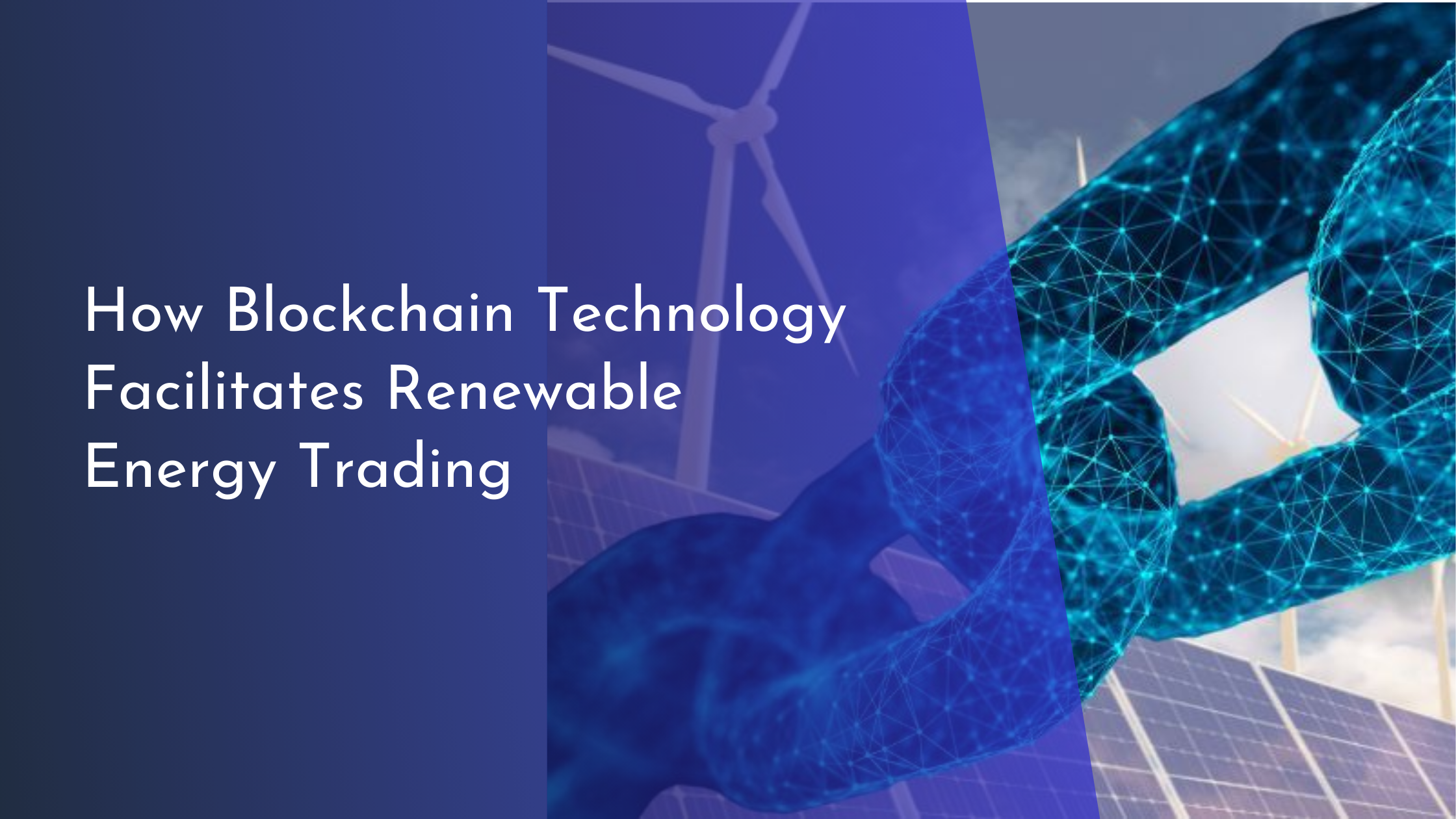How Blockchain Technology Facilitates Renewable Energy Trading
Blockchain technology, often associated with cryptocurrencies, has found a promising and transformative application in the energy sector, particularly in renewable energy trading. As the world increasingly shifts toward sustainable energy solutions, blockchain stands out as an innovative tool that enhances transparency, efficiency, and accessibility in energy markets. This article delves into how blockchain facilitates renewable energy trading, highlighting its benefits, real-world applications, and future prospects.
Understanding Blockchain in Energy Markets
Blockchain is a decentralized digital ledger technology that ensures transparency and security in transactions by recording data across multiple nodes in its network. In energy markets, blockchain technology can be used to track and verify the production, distribution, and consumption of energy in real-time. This decentralized approach enables all participants, from producers to consumers, to have equal access to the energy market, making the system fairer and more efficient. Energy transactions recorded on the blockchain are immutable and transparent, which enhances trust among participants and eliminates the need for intermediaries.
To facilitate renewable energy trading, blockchain provides a platform for peer-to-peer energy exchanges. This means that individuals and businesses can directly buy and sell energy with one another, bypassing traditional utility companies. Energy producers can tokenize their energy output into blockchain-based assets, which can then be traded with consumers who need energy. This democratization of energy trading empowers consumers to select their energy sources, ensuring a more sustainable energy consumption pattern and fostering the growth of renewable energy markets.
Benefits of Using Blockchain for Energy Trading
One of the primary benefits of using blockchain in energy trading is the increased transparency it provides. Every transaction is recorded on the blockchain, accessible to all participants, and cannot be altered once confirmed. This transparency not only reduces the risk of fraud but also allows for better regulatory compliance and auditing processes. Moreover, blockchain technology can help streamline the billing and settlement processes by automating transactions through smart contracts, which execute agreements automatically when preset conditions are met.
Another significant advantage of blockchain in energy trading is cost reduction. By removing intermediaries, blockchain reduces transaction costs and allows for more direct trading between producers and consumers. Additionally, the decentralized nature of blockchain enhances grid efficiency by enabling real-time energy balancing and load management, which can significantly reduce energy wastage. These cost savings can be passed on to consumers, making renewable energy more accessible and affordable for a broader audience.
Real-World Applications in Renewable Energy
Several pioneering projects have already demonstrated the potential of blockchain in renewable energy trading. For example, in Brooklyn, New York, the Brooklyn Microgrid project allows residents to trade solar energy with each other using a blockchain-based platform. This initiative has empowered local communities to be more resilient and self-sufficient while promoting the use of clean energy. Similarly, in Europe, companies like Power Ledger have been at the forefront of enabling peer-to-peer energy trading, utilizing blockchain to facilitate transparent and efficient energy exchanges.
Beyond localized projects, larger-scale applications of blockchain are also emerging. In China, the Energy Blockchain Labs has developed platforms that use blockchain to enhance carbon trading efficiency, thus promoting renewable energy adoption to meet emission targets. These real-world applications illustrate the versatility of blockchain technology in creating decentralized and sustainable energy systems. By making renewable energy more accessible and appealing, blockchain can pave the way for a broader transition to green energy solutions.
Future Prospects and Opportunities in the Field
The future of blockchain in renewable energy trading looks promising, with numerous opportunities for innovation and growth. As the technology matures, we can expect to see more sophisticated applications that further enhance the efficiency and scalability of energy markets. Blockchain has the potential to integrate seamlessly with emerging technologies such as the Internet of Things (IoT) and artificial intelligence, creating smart grids that optimize energy usage and distribution based on real-time data.
Moreover, blockchain can play a crucial role in supporting the transition to decentralized energy systems, which are becoming increasingly popular with the rise of distributed renewable energy resources such as solar panels and wind turbines. By enabling direct and transparent transactions, blockchain can facilitate the creation of energy communities where consumers collectively manage and trade their energy resources. These developments hold the promise of making renewable energy more accessible, affordable, and sustainable for everyone.
In conclusion, blockchain technology represents a revolutionary leap forward in the renewable energy sector, offering a plethora of benefits from increased transparency to cost savings. As real-world applications continue to demonstrate its potential, and as new opportunities emerge, blockchain stands to play a pivotal role in shaping the future of energy trading. By fostering a decentralized, efficient, and sustainable energy market, blockchain not only supports the growth of renewable energy but also contributes to a greener and more equitable world.


